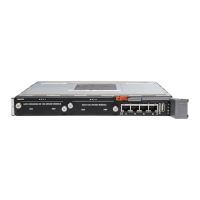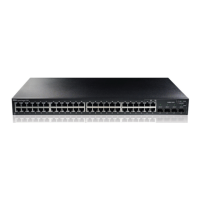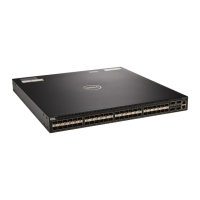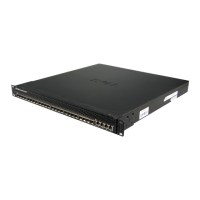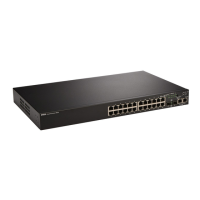global Enter the keyword global to display the packet counts
received on all running OSPF interfaces and packet counts
OSPF neighbors receive and transmit.
interface name (OPTIONAL) Enter the keyword interface then one of the
following interface keywords and slot/port or number
information:
• For a 40-Gigabit Ethernet interface, enter the keyword
fortyGigE then the slot/port information.
• For Port Channel groups, enter the keywords port-
channel
then a number. The range is from 1 to 128.
• For a 10-Gigabit Ethernet interface, enter the keyword
TenGigabitEthernet then the slot/port information.
• For a VLAN, enter the keyword vlan then a number from
1 to 4094.
neighbor
router-id
(OPTIONAL) Enter the keyword neighbor then the
neighbor’s router-id in dotted decimal format (A.B.C.D.).
Defaults none
Command
Modes
• EXEC
• EXEC Privilege
Command
History
Version 8.3.16.1 Introduced on the MXL 10/40GbE Switch IO Module.
Usage
Information
The following describes the show ip ospf statistics process-id global
command shown in the following example.
Row Heading Description
Total Displays the total number of packets the OSPF process
receives/transmits.
Error Displays the error count while receiving and transmitting
packets by the OSPF process.
Hello Number of OSPF Hello packets.
DDiscr Number of database description packets.
LSReq Number of link state request packets.
LSUpd Number of link state update packets.
LSAck Number of link state acknowledgement packets.
TxQ-Len The transmission queue length.
RxQ-Len The reception queue length.
Tx-Mark The highest number mark in the transmission queue.
Rx-Mark The highest number mark in the reception queue.
974
Open Shortest Path First (OSPFv2 and OSPFv3)
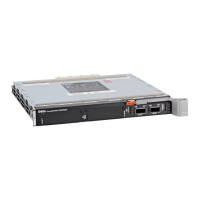
